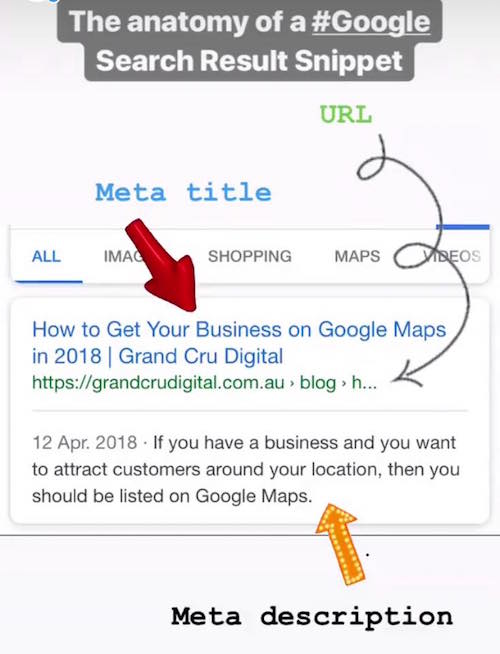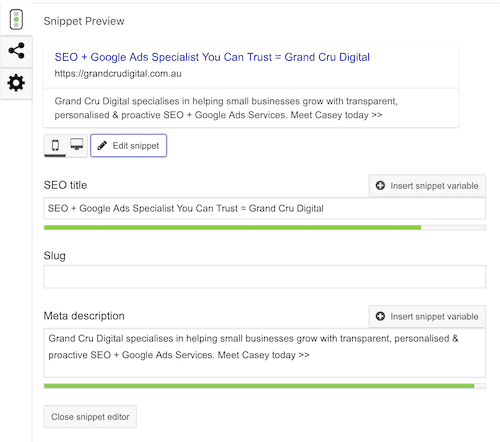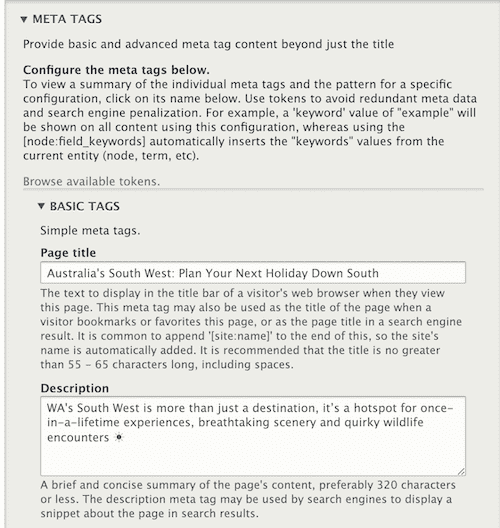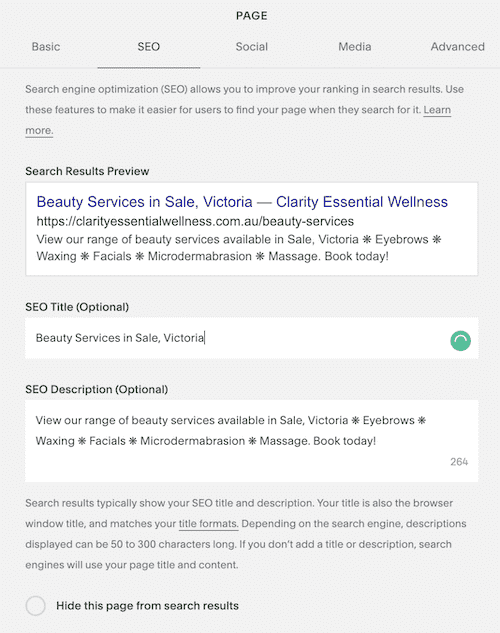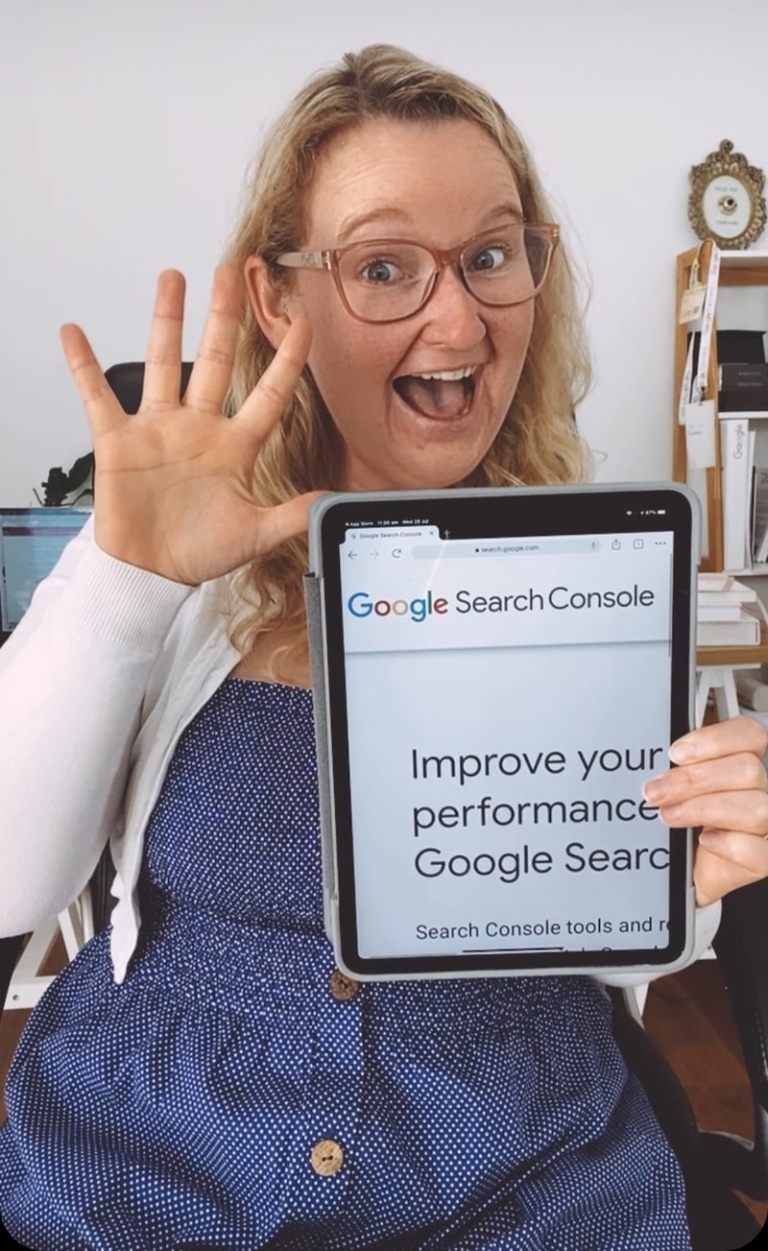 SEO can be very confusing. There are so many little tasks involved in reaching the top of the search result pages. Plus it takes time, 4-12 months to see the benefits of SEO according to Google. This is why SEO is typically thrown in the ‘too hard basket’ or the ‘I don’t have enough time basket’. Therefore, business owners, CEO’s and Marketing Managers turn to me. They know it’s important and therefore need someone to take care of it and advise them.
SEO can be very confusing. There are so many little tasks involved in reaching the top of the search result pages. Plus it takes time, 4-12 months to see the benefits of SEO according to Google. This is why SEO is typically thrown in the ‘too hard basket’ or the ‘I don’t have enough time basket’. Therefore, business owners, CEO’s and Marketing Managers turn to me. They know it’s important and therefore need someone to take care of it and advise them.
However, sometimes as a small business owner, our funds don’t stretch to hiring specialists. So if you’re a one woman/man band that needs to DIY your SEO, but you don’t know where to start – don’t fret. This post is here to help you.
WARNING: The below will not skyrocket your business with the most amazing SEO success anyone has ever seen. However, it will help you get on the right track and improve your website’s appearance in the search results.
Firstly, is your website showing in Google?
To check this, simply type in site:yourdomain.com.au into Google. When I do it for my site, e.g. site:grandcrudigital.com.au this is what I get.
If it’s not, feel free to pop me a message and I can point you in the right direction pretty quickly.
If it is, and you see a list of all your web pages, you can continue reading this post.
This one thing, I do for ALL my clients – it’s essential to SEO success.
What is metadata for SEO?
When we talk about metadata in the SEO world, we are referring to how your website shows up on the search engine result pages (SERPs). A standard result on the SERPs is comprised of 3 elements:
- Meta title
- URL
- Meta description
The meta title and description do not show on your webpage. They show on the search result pages and your meta title will also show in the browser tab. I have seen some CMS’s where the metadata shows on the page and this is not good, so if this is happening on your website, speak with your web developer ASAP.
All content management systems (CMS) should have somewhere you can input the meta title and description on all pages of your website. If your CMS (e.g. backend of your website) does not have a spot to add metadata, then talk to your web developer.
It can differ from CMS to CMS. For WordPress, most website owners will add the Yoast SEO plugin to add metadata:
In Drupal, you’ll find they call the metadata, ‘meta tags’. You will have to enable the module for it to show. Once it’s enabled you can then set your meta tags on each page:
In Squarespace you’ll notice they are called ‘SEO title’ and ‘SEO description’:
Why is metadata so important for SEO?
The reason I’d suggest a website owner focus on this task above other SEO tasks is that every website should add metadata to their pages if they intend for people to click through to these pages from search engines like Google or Bing.
By adding SEO metadata you will:
- Be improving the first impression of your website to people searching for businesses and content like yours
- Help Google understand your webpage and potentially rank it higher
- Be focused on enticing people to click through to your website which will hopefully result in more visitors and ultimately more sales/leads/brand awareness
For some people, it’ll be their first interaction with your brand/business – so you really should make it count.
On a side note, I do want to mention that even if you input your metadata into your CMS, Google may not always show it. Sometimes Google will pull data from the content of your page to create metadata that it deems more relevant to the searches query. So don’t stress if this happens.
How to write a meta title
Now let’s get into the good stuff! Your meta title, or SEO title, is INCREDIBLY important. This is that bright blue title on your search result on Google. Not only does it stand out and is the piece of info that nearly everyone reads, but it is also a ranking signal for Google.
Therefore by editing your meta titles, you can quite easily jump from say position 10 on the first page of the search results to position 5 with just a meta title change. Please don’t take that as a fact that it will happen, but it can.
So how do we write a meta title?
- Firstly you want to make sure your meta title is the right length and doesn’t get truncated. Yoast SEO will help you with this, or you can use a tool like SEOmofo. Generally, you should aim for 50-60 characters max
- Typically you’ll want to add your brand/business name to the end of every meta title to help with brand awareness. You can separate this out from the rest of the meta title with something like a pipe or hyphen, e.g. | Grand Cru Digital, – Grand Cru Digital
- After doing some SEO keyword research you’ll then want to add your most important target keyword phrase to the front of the tag
- And then with any leftover characters, you’ll want to try and add a unique selling point or something to make your meta title pop so people want to click it
Sometimes your CMS can allow you to put symbols and characters to help your title stand out further. Expirement and see what works best for your website.
Pro tips for meta titles:
- All meta titles on your website should be unique, avoid having two pages with the same meta title
- Create a title that reads as naturally as possible and effectively communicates what the web page is about
Once you update your meta titles it can take Google and other search engines a little bit of time to notice and reflect the change on the search result pages. To speed up the process you can use Google’s fetch tool in Google Search Console. There is also a similar tool in Bing Webmaster Tools.
How to write a meta description
Meta descriptions, unlike meta titles, are not ranking factors for Google. However, this doesn’t mean you should neglect them. Meta descriptions can help improve the chances of someone clicking on your search result. In the biz, this is what we call, improve the click-through-rate.
Again, SEO tools like Yoast and SEOmofo can help you get the right length for your meta description. Generally, 150-160 characters is the sweet spot.
Tips for writing meta descriptions:
- Like meta titles, each page should have a unique description (this helps Google tell your pages apart from one another)
- Aim to write a description that will inform and interest people so they are enticed to click through to your website
What about meta keywords?
A lot of people ask me about meta keywords. It’s a very easy question to answer, you don’t need them.
It was way back in 2009 when it was confirmed that Google does not look at meta keywords at all.
If you have added them to your website, I’d look to delete them. The only use I have seen for them by people is to snoop on other websites to see what keywords they may be targeting for SEO.
How to continually improve your website’s metadata
Like all important aspects of SEO, metadata isn’t a set and forget task. If you want your metadata to really work for you, you should be checking on how it is performing at least a couple of times of year.
By using tools such as Google Search Console (which is free by the way) you can get a good idea of what people are searching for. Within this tool, you can see estimates of how many times your website shows in the search results for different queries and if people click through.
By using this data you can then tweak keywords in your meta title to make it more relevant to what people are searching for and improve your rankings. Or you may decide to test different meta descriptions to improve the click-through-rates.
Google Search Console is a great tool for analysing how your metadata is doing. I find the Performance report is exceptionally useful and of late, I have been using it to look at what keywords certain pages are triggered by:
In Conclusion
Anyone can add metadata to their website themselves. Yes being a specialist, does make it easier, however, if you don’t feel you have the time to do it or the funds to hire someone to do it for you, please don’t let that stop you. Make a change, check how it looks by using the site command in Google (site:mydomain.com) and monitor whether you’re getting more website traffic/sales/leads etc.
Sometime’s it’s the little things like a small metadata tweak that can help you see big SEO results. If you want more tips, here are 20 more free SEO tips.

